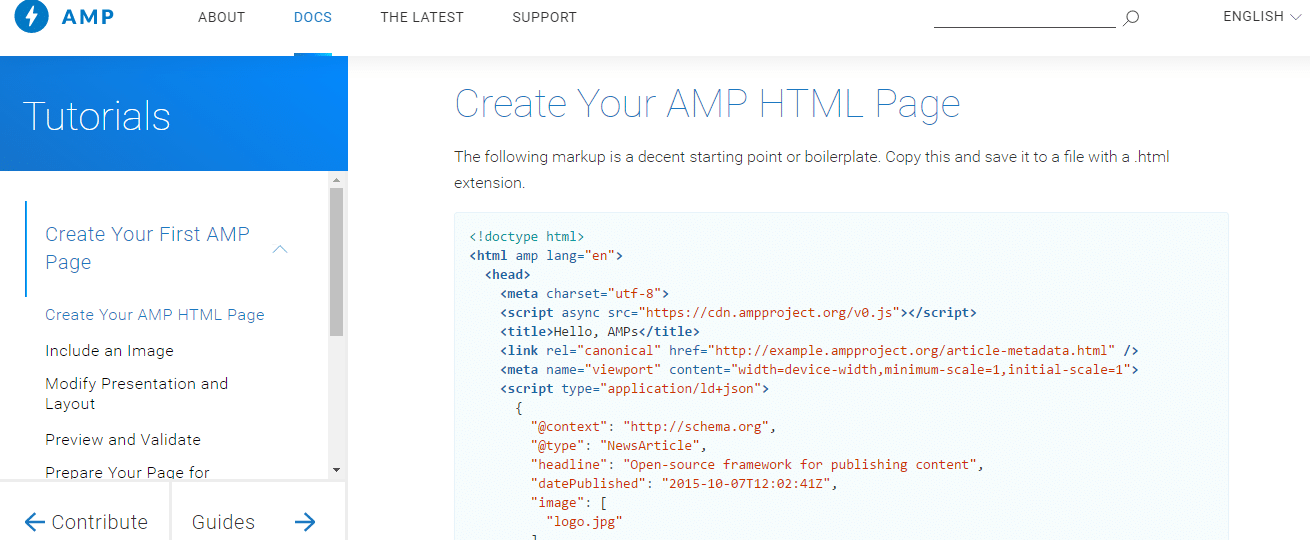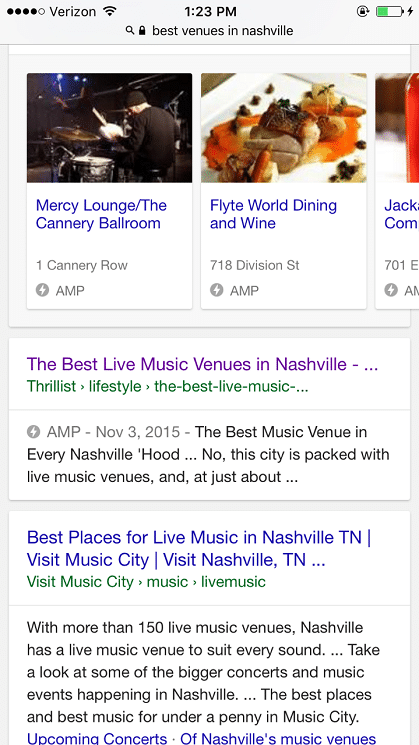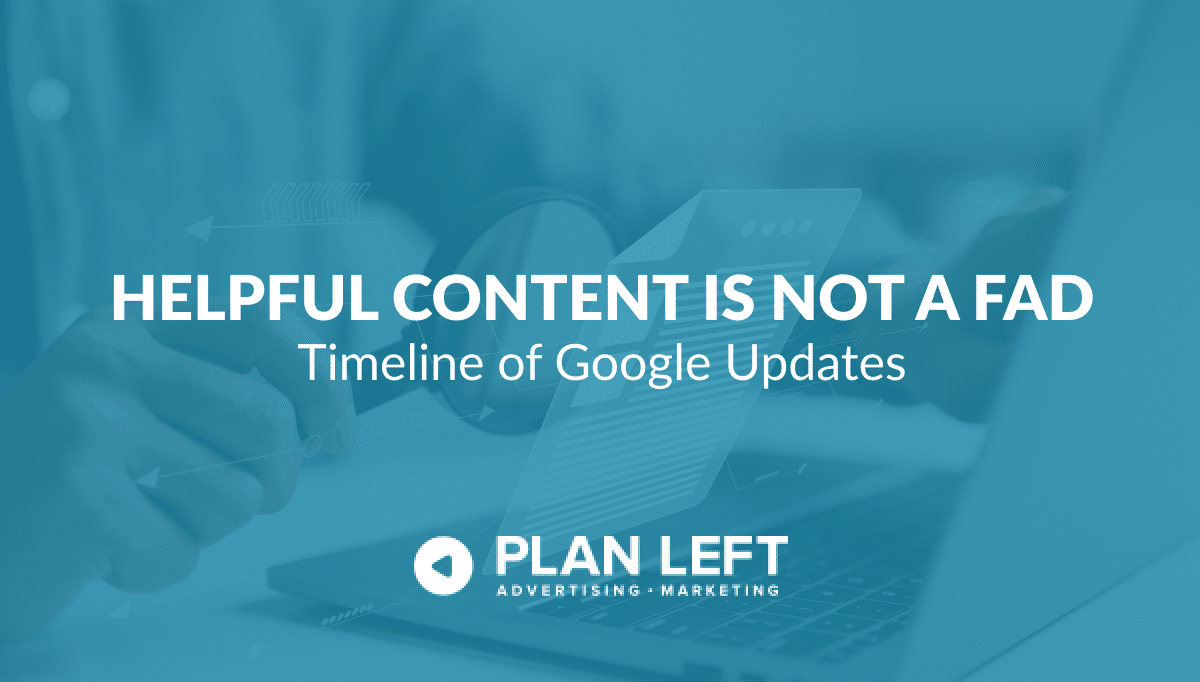
Would it surprise you to know that more internet users now access the web from mobile devices than from desktops or laptops?
If your company’s website is a huge part of your marketing and revenue, it probably won’t.
You’ve watched online retail and smartphone usage rise steeply over the past few years. You’ve seen how Google has changed its algorithm to not only reflect the rise in mobile, but actually favor it—in fact, Google announced last fall that it has begun testing a mobile-first ranking system.
Simply put, this means your website’s mobile version is Google’s new standard when deciding how to rank your site in search engine results pages.
If your mobile site is slow, has intrusive interstitials, or complex content that doesn’t load attractively, you’re probably annoying your mobile visitors—and soon, you’ll be penalized by Google. So those visitors that are annoyed with your mobile site won’t even be able to find it anymore.
In the fall of 2015, Google introduced Accelerated Mobile Pages–an answer, if you will, to the already popular Facebook Instant Pages and Apple News. These two platforms offered publishers guaranteed instant load times for their content, at the cost of that content being restricted to only Apple and Facebook’s platforms.
This presented a problem for publishers in that it dramatically limited their content’s reach and potential.
Accelerated Mobile Pages was different. It was an open-source initiative that allowed publishers’ content to flourish on the open web.
How Does AMP Work?
Essentially, AMP is an open source initiative that translates publishers’ content into instantly-loading mobile pages.
Publishers simply change the code of their static content to reflect AMP’s custom elements—and soon, those pages will be loading in a fraction of a section.
Check out this example of what AMP HTML markup looks like at its starting point:
It’s pretty simple, right?
One thing that many publishers don’t understand before they try to use AMP is it’s designed to work with static pages.
Think images, CSS, HTML files—things that aren’t dynamic and don’t change based on input from a user. Basically, don’t expect to be able to transform all of your site’s pages into Accelerated Mobile Pages.
There are also a few other limitations to AMP’s standards:
- AMP only supports in-line CSS
- Supports only asynchronous scripts
- Images must state their size in the HTML
- Does not support user-written Javascript
- Style sizes are limited
Even with these limitations, AMP still has a ton of benefits for both users and publishers.
Speaking of publishers…
AMP Will Benefit Your Site in Multiple Ways
Google has made it clear that AMP is meant to improve user experience first and publisher results second.
But many of its benefits to users are also benefits to publishers and site owners.
How so, you ask?
Page load speed is the primary way that AMP benefits your site.
Faster page loading = happier users. If users are happy, they’ll stay on your page longer, explore more of your content and think of your site favorably in comparison to your competitors’ slow-loading, Stone-age mobile sites.
Fast page load speeds also help you in Google’s rankings—since mobile page load speed is a ranking factor.
But AMP’s pages also have design features that make them better for user experience than non-AMP pages.
Check out this non-AMP mobile page:
As you can see, a quarter of the page is taken up with an advertisement for the publisher’s app. After that, the user is immediately hit with two more advertisements (which take up another half of the page) for The Bridge Building and the So South Guide.
The article’s image cannot be seen above the fold, which is bad for both user experience and engagement with the content.
Also, it’s worth mentioning that this page took 9 seconds to load.
If I was a normal internet user looking for information on waterfalls in Tennessee, I would’ve left this page within the first 3 seconds, no question.
So now let’s look at an AMP-supported page:
There are no intrusive ads on this page. There are no ads at all, actually.
And the picture (which stretches the width of the mobile screen) is above the fold, sized correctly, and has great resolution. Halfway down the screen (still above the fold), the user can see the title of the article–they know they’ve landed on the page they wanted, and when they do begin to scroll, they won’t be bombarded with a huge “Download Our App” pop-up or any other distracting interstitials.
AMP-supported pages are also clearly marked on search engine results pages:
As users become more familiar with AMP’s layout and lightning-fast loading speeds, they’re likely to actually seek out AMP pages in search results, giving AMP adherers a distinct advantage.
Simply put, AMP’s custom elements produce mobile pages that are in line with what users want—and delivering what users want has been massively beneficial to publishers:
- Slate: 44% increase in unique monthly visitors
- Wired: 25% increase in CTR from search results page visitors
- 80% of publishers who used AMP in its first year experienced higher viewability rates
- 73% of publishers who used AMP in its first year experienced an increase in visits per monthly unique visitors
If there was a way to guarantee that your website’s mobile pages would load instantly, look great and provide users with the experience they desire, wouldn’t you pounce on it?
Google’s AMP offers these things. And if you aren’t taking advantage of it, you’re probably not offering a mobile experience that equals your AMP-using competitors.
Plan Left can help you get started utilizing this AMP’s custom elements on your site’s mobile pages. Contact us today to learn more.
Check back often for more on Accelerated Mobile Pages and other great topics.
Explore Latest Posts
Google says the quality of your webpage is a ranking factor, but what is ‘quality’ according to Google? That would ... read more
April 19, 2024
In 2011, Google first changed how content was written with the Panda Update by changing how keywords could be used ... read more
April 17, 2024
The latest Google algorithm changes have shaken the search marketing world. While the Google Spam update has finished, the Google ... read more
April 16, 2024
MARKETING insights
Join the Thousands Who Receive Our Twice-Monthly Newsletter.
It's hard to keep up. Our newsletter is packed with buyer behavior insights, the latest marketing and technology updates, work/life balance tips, and—because we ❤️ our support staff—adorable pets looking for forever homes. Only twice per month. No clogged inboxes. You can't say no.








